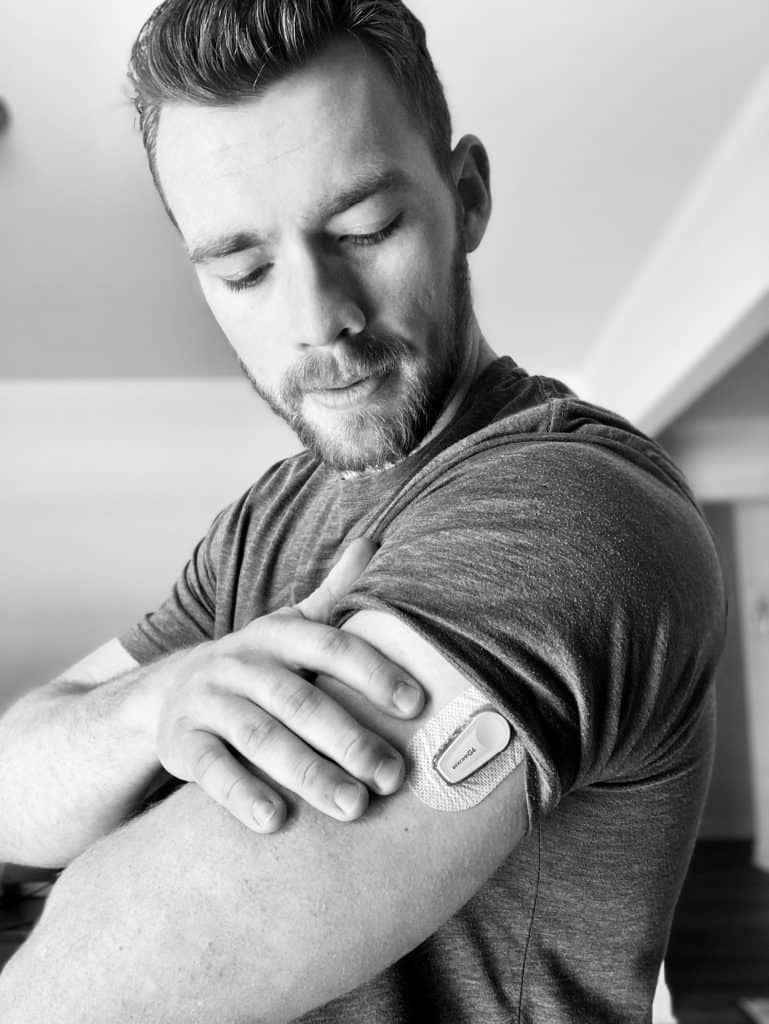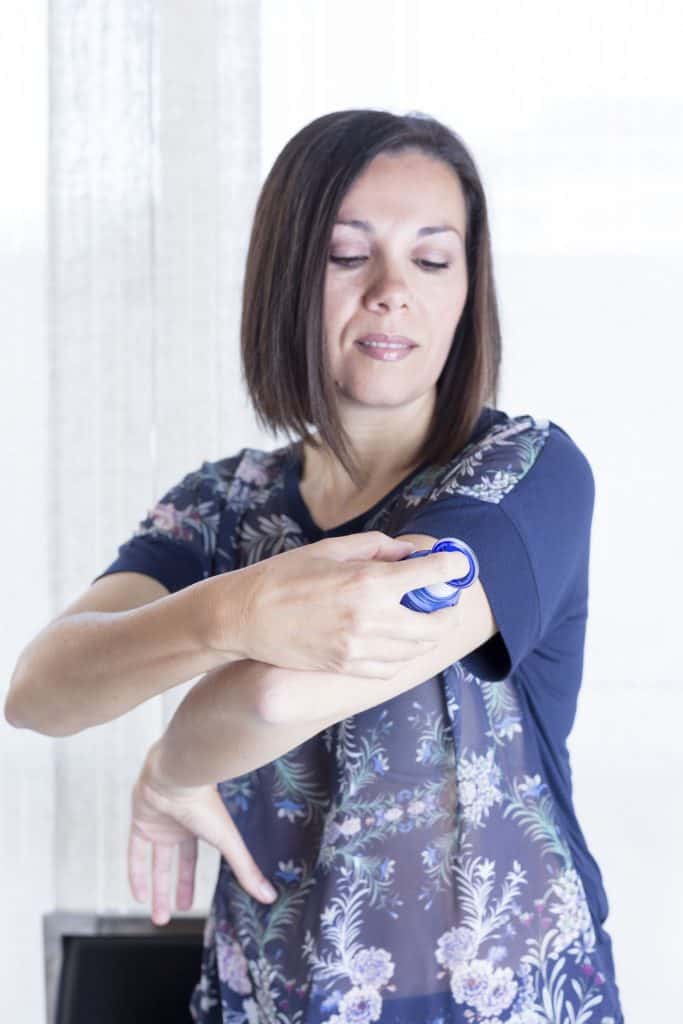Can You Put a Dexcom G6 on Your Arm? Here’s the Answer!
Posted by Prescription Hope - See Editorial Guidelines (Last Updated On: Thu Apr 27 2023)
The Dexcom G6 is an instrument that is used for monitoring the glucose levels of diabetes patients. It’s a continuous glucose monitor (CGM) that sends glucose readings to a smart device or the Dexcom receiver every 5 minutes.
This article will give a clear understanding of whether or not one can put the Dexcom G6 on your arm, where else it can be placed, safety information, and benefits.
Here’s a quick answer, then we’ll get into more detail.
Can You Put Dexcom G6 on your arm? Technically, the Dexcom G6 is only approved to be worn on the belly or upper buttocks. However, several individuals prefer to wear the Dexcom G6 on the arm. Some people claim that it is less painful, and they receive more accurate readings when it is placed on their upper arm.

The Dexcom G6 is the newer version of this device, which is prescribed for patients of 2 years or older.
There are some common confusions with this device, especially if it can be placed on the arm.
So, now that we’ve seen the quick answer, you may be wondering why it’s not part of the official advice to put the Dexcom G6 on your arm. First, let’s discuss the benefits of putting the Dexcom G6 on your upper arm and some safety information and warnings.
Benefits of Putting Dexcom G6 on Your Arm
It is important to note that wearing the Dexcom G6 on your arm is not FDA approved. This may be due to Dexcom not submitting clinical data to the FDA for the use of the CGM on the upper arm. Therefore, wearing the Dexcom G6 on your arm must be done at your own risk.
For many people, the upper arm is a meatier area than the abdomen. Therefore, placing the CGM on the upper arm may be less painful than if one placed it on their abdomen, which is the recommended or advised place to put a Dexcom G6.
Placing the CGM on the upper arm may be more comfortable for many, as they find that the adhesive from the CGM wears off easier on the abdomen. This may be due to do the stomach area being more prone to sweating. So, by placing the CGM on an area that is less prone to increased sweating, you may be able to make the device last a few more days than usual.
The abdomen area may also bruise easier, which can be painful. Bruising can be severely uncomfortable, especially when it comes to injecting anything.
Also, some patients may have used the abdomen area for different other kinds of injections and pump placements, which can cause tissue scarring. Tissue scarring can make injecting in that area painful and an inefficient placement for any medical device. Therefore, wearing the Dexcom G6 on your arm can be a beneficial alternative to prevent scar tissue.
Many who put Dexcom G6 on the arm also believe that they get better readings there because there’s less loss of signals. Especially when wearing in the abdomen, clothes can get in the way, making it hard to get accurate readings and proper signals.
And most importantly, waistlines can also play their part in getting in the way of sensors. Patients that have various styles and wear pants at different heights on their waist may find it difficult to find spots in the abdomen that are suitable.
Ultimately, wearing the Dexcom G6 on your arm can be much more comfortable, depending on your lifestyle. Again, wear the Dexcom G6 on your arm at YOUR OWN RISK.
Dexcom G6 Safety Information and Warnings
In order for you to fully understand how the Dexcom G6 works, you should read all of the materials included.
Perhaps, the most crucial safety warning one should not ignore, are the symptoms of high or low blood sugars. Regardless of what the Dexcom G6 is reading, if you have symptoms, then you should manually check your blood sugar using your glucose meter. There are cases where a CGM can fail and give inaccurate readings.
The Dexcom G6 is not recommended to be used if you are pregnant, critically ill, or if you are on dialysis. Glucose readings from the CGM may be affected by medical conditions such as these.
Some sunscreens and insect repellents can cause the plastic on the device to crack. So, whether you are wearing the Dexcom G6 on your arm or somewhere else, avoid getting sunscreen and insect repellent on it. Avoid getting any skincare products on the device as well.
A sensor code is required to be put into your display device. The code is displayed on the sensor. If you do not use the sensor code, then you will be required to calibrate the sensor with finger sticks.
Broken or detached sensor wires can occur. If a sensor wire detaches under your skin, contact your doctor. Look for signs of infection or inflammation.
Before applying the Dexcom G6 to your arm or another area of your body, be sure to clean the area well with an alcohol wipe.
If you are looking to apply the Dexcom G6 to your arm, then you may require help. Most people will find it challenging to apply the CGM with just one hand.
Why Doesn’t Dexcom Recommend Wearing Dexcom G6 on Your Arm?

Dexcom recommends or advises patients to wear it on the abdomen or upper buttocks only because that’s the only place they have tested and submitted clinical data for FDA approval.
The manual states that children are advised to apply the sensor on their bellies (abdomen) or buttocks. And if one is over 18 years, it’s advised only to insert the sensor in the abdomen. The manual also specifies that the sensor should be applied horizontally and not vertically or at any other angle.
The reason why Dexcom hasn’t received approval for other places is that it would involve more cost for the test, trial, and approval.
Many patients have suggested that Dexcom grant approval for its use in other places. However, we must stress that at this time, using the Dexcom G6 on the arm or any other site that has not received approval is taken at your “own risk.”
Dexcom has never denied any patients inquiring if it can be used elsewhere other than the abdomen.
Even when patients made inquiries about the device being placed on the arm, Dexcom has not said anything to endorse or discourage people from putting it on the arm.
Where Else Can Dexcom G6 Be Applied?
Dexcom G6 can be put in most reasonable places where it feels comfortable. However, the CGM should not be placed directly over bone or in a very muscular area. It is suggested that you place your CGM around a fattier area of your body.
Apart from using the abdomen and arms, some suggest using the thighs as a potential placement. If one is also using an insulin pump, it can be challenging to find a place on the body that is not overused. This is why many individuals have ventured out to try different areas of their body for placing these devices.
It’s always recommended that you choose a place following your doctor’s advice. Your doctor will be able to make suggestions based on what research has been done and what other patients are doing.

Conclusion
We hope this has been useful in deciding or at least understanding if you can put the Dexcom G6 on your arm.
As always, we do not provide this as medical advice. You should always consult your doctor before making medical or health-related decisions.
If you have any questions about how Prescription Hope can help you save money on any drugs that we offer, or if you’re having trouble affording any of the medications you’ve been prescribed, then contact us. Visit the enrollment page to fill out an application and let us save you money !


